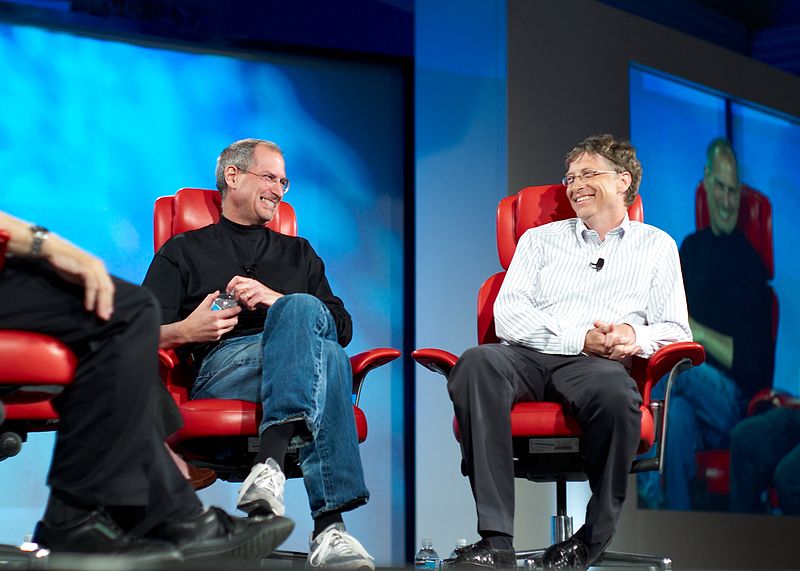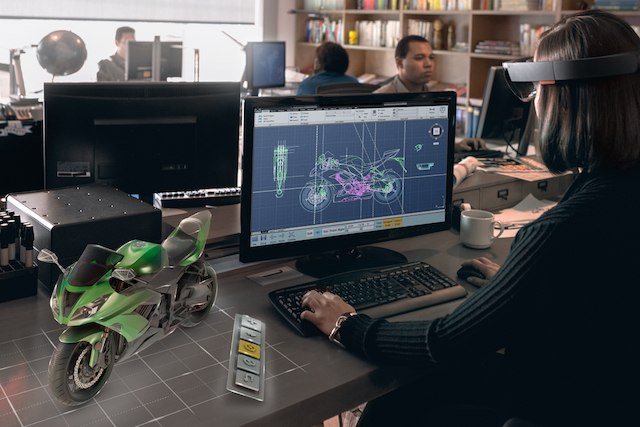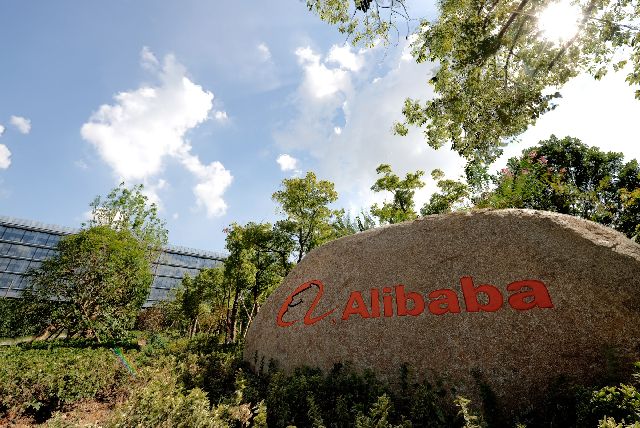The stunning quarterly results of Apple announced yesterday compared to Microsoft’s indifferent performance illustrate how the fortunes of two different business cultures have changed.
Apple yesterday announced a spectacular result for its quarter finishing at the end of last year with revenues up 30%, profits by 38% and Earnings Per Share just short of fifty percent.
The announcement was an emphatic vindication for Tim Cook and his management team who made some big bets on the larger form factor iPhone 6 which paid off spectacularly with shipments growing 46% to 74.5 million and revenue reaching $51.2 billion, over two thirds of the company’s total sales.
One notable aspect of Apple’s success is the difference with Microsoft’s and this shows how different business cultures come in and out of fashion.
The Triumph of the MBA
For two decades Microsoft’s licensing business model was dominant and this confirmed the MBA view that companies should do everything they can to move design, research, manufacturing and distribution out of their operations – the virtual corporation where there was no inventory, few costs and even fewer risks was the ultimate aim of the modern manager at the turn of the century.
Microsoft encapsulated this philosophy with its licensing model, while the company made massive sales with huge margins – as it still does – all the business risks in the computer market were carried by resellers and equipment manufacturers. For many years the markets loved this.
Apple tinkered with the licensing model under John Sculley in the mid 1990s during Steve Jobs’ exile but was never really serious about giving away its hardware capabilities and in 2001 moved into retail with the opening of the first Apple Store.
Coupled with the App Store, Apple have come to control the entire customer journey from marketing, design, purchase and ongoing revenue after the product is bought.
King of the new Millennium
While the 1980s and 90s were the time of triumph for the Microsoft model, the 2000s have been good to Apple as shown by the revenue and profit figures.


The key inflection point in these charts is, of course, the iPhone’s release in 2007. Apple caught the wave of change as computer use switched from personal computers to smartphones and is now the dominant vendor.
For Microsoft the success of Apple is bittersweet; the company had a smartphone operating system in Windows CE but it was too early to the market and the devices vendors went to market with were, at best, substandard.
Microsoft’s failure with the smartphone was also echoed with tablet computers and exposed the licensing model’s reliance on vendors to supply and support decent products, even today Microsoft’s hardware partners struggle to release decent tablet systems.
Cloudy on the web
Another problem that exposed Microsoft’s weaknesses was the rise of the web where hardware and operating systems really did matter so much any more. Along with pushing out personal computer lifecycles it also had the consequence of allowing other systems into the marketplace, notably Linux and Google Android.
With OS X, Android and Linux systems no longer hampered with the compatibility issues that irritated non-Windows users in the 1990s the market was open to adopting those systems. While the PC market has remained quite loyal to Windows, although the Apple Macs are showing serious growth as well, Microsoft’s system has barely any marketshare in other device segments except servers which are also declining as business increasingly move to cloud services.
Apple have shown in the computing and smartphone business that controlling the hardware products is as important as supplying the software, a lesson that Microsoft now acknowledges with its restructure into a ‘Devices and Services’ company under former CEO Steve Ballmer.
The problem for Microsoft is its margins for hardware are a fraction of its own licensing operations and weak compared to Apple’s returns. Microsoft makes 14% profit on its phone operations while the iPhone is estimated to deliver over 60%.
Under current CEO Satya Nadella Microsoft is focusing on cloud services which also aren’t as profitable as its legacy operations but see it competing with companies like Amazon and Google who don’t boast the profits from their online operations that Apple makes from its hardware.
Microsoft aside, the lesson Apple gives the technology is pertinent for its competitors in the smartphone space as well; companies like Samsung, LG and the army of Chinese handset vendors are going to find their markets tough unless they can take control of their software development and distribution channels – relying on Google for Android and telcos to get their phones to customers leaves them exposed in similar ways to Microsoft’s partners in the last decade.
In the battle between business models, Apple is the current winner and shows throwing all of your business operations over the fence to partners and licensees is a risky strategy. How those lessons are applied in other sectors will test the limits of both management philosophies.
Photo of Steve Jobs and Bill Gates by Joi Ito through Flickr





